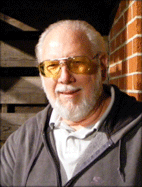Peer Review: The Fausti Dea Round Body and the Fausti Caledon
Written by Irwin Greenstein with the opinions of Terry Crawford, Rick Cundiff, Josh Lepman, Darrell McKigney, Mark Polek and Joe Svach
Coming to your local dealer soon: fine Italian shotguns bearing the Fausti name.
Although the three Italian Fausti sisters have become more popular than the Mona Lisa in shooting clubs across the U.S., if you wanted to purchase one of their shotguns it helped if you lived within driving distance of a Cabela’s. Until recently, the outdoor superstore was the sole American retailer.
But in March 2009, Joe Cunniffe and Craig Johnson launched Fausti USA – the manufacturer’s own distribution arm in Fredericksburg, Virginia. Under their stewardship, Fausti of Italy is rapidly establishing a national network of American dealers and sales representatives to supplement Cabela’s. So when you walk into your local gun store, you’ll find Faustis now displayed alongside Brownings, Berettas, Krieghoffs and other staples of the shotgun sports.
The Fausti lineup is eclectic, befitting the company’s boutique approach to gun making. The receivers and other parts are CNC-machined for space-age tolerances, but many of the models mirror the golden age of shotgun craftsmanship. You’ll find over/unders, side by sides and hammer guns with prices ranging from $2,000 upwards – all of them finished by hand.
Although Fausti USA will accept custom orders for premium shotguns, the American market will initially be home to five production boxlocks:
- The Dea Duetto is a single-trigger, 28 gauge/.410 combo side by side with a list price of $4,999.
- The Dea Round Body is a 20-gauge side by side with more engraving and an overall higher quality finish. It’s a classic double-trigger field gun and sells for $5,899.
- The Class is an over/under field gun available in 20-gauge and 12-gauge models. The coin-finish receiver has full-cover engraving and a list price of $2,449.
- The Class is also available in a very lovely round body. It comes only as a 20 gauge with either an engraved coin-finish on the receiver or a case-hardened finish. That gun sells for $4,199.
- The Caledon is their entry model with a price of $1,999. It’s an over/under field gun with a coin-finish receiver that has a unique engraving pattern. The Caledon is available in both 20-gauge and 12-gauge models.
Given that we’ll be seeing plenty more Faustis here in the U.S., we took the opportunity to conduct a Peer Review on two models. The Peer Review Posse shot the Dea Round Body and the Caledon.
The Fausti Dea Round Body
The Dea Round Body is Fausti’s interpretation of a traditional upland shotgun. With double, gold-plated triggers and curved edges along the bottom of the receiver, it begs to be taken on your next pheasant hunt. This gun is a true round action, not a squared action with the edges polished off.
It had a straight English stock and matching wood butt plate with case-colored screws. The oil-finished Turkish walnut on our shotgun featured attractive figuring that complemented the case-colors of the receiver, which itself was resplendent with full scroll and the words Dea Round Body in gold that arced on the side of the receiver in the spirit of a Holland & Holland Sporting or Krieghoff Essencia. We liked the curved fit of the receiver to the stock – softening the perpendicular seam that typically characterizes a boxlock. The long tang that flowed into the bottom of the stock was adorned with scroll engraving that carried into the mounting screws as well.

The wood on the splinter forend was well-matched to the stock. The case-colored hardware matched the button on the forend finial to release the Anson push-rod latch. Remove the forend and you’ll see a switch that allows you to select between eject and extract modes for the spent shells – a unique feature that was well-received.
The chequering throughout is finely executed by laser, and its expanse on the forend would allow just about any shooter to find a comfortable hold without inadvertently touching the hot barrels.
A tapered raised rib flowed into the top tang that hosted the safety. It had a single brass bead at the muzzle. Our Dea Round Body had a manual safety, which was appreciated among our seasoned shooters.
The Dea Round Body comes standard with five screw-in chokes: cylinder, improved cylinder, modified, improved modified and full. The chokes rated for lead only are improved modified and full, while cylinder, improved cylinder and modified and rated for both lead and steel.
The dimensions of the Dea Round Body are as follows:
- Guages available are 12, 16, 20 and 28. The 12, 16 and 28 gauge models feature frames scaled to the gauge.
- Barrel length: 28 inches (30-inch and 26-inch lengths are available on special order).
- Overall length: 45½ inches
- Average weight: 6 pounds
- Length of pull: 14 3/8 inches
- Drop at heel: 2¼ inches
- Drop at comb: 1 7/8 inches
The interior of the receiver appeared clean and well finished. It had Dual Purdey locking lugs with two fasteners and a double-bite lock. The mono-block barrel construction featured jeweled machining on the sides of the monobloc. The Dea Round Body accepts up to 3-inch shells.
We brought the Dea Round Body to Prospect Hall, a private hunting and shooting club in Kearneysville, West Virginia. The occasion was a morning of sporting clays with a group of vintage shotgun enthusiasts.
Unlike many courses that have turned sporting clays into an extreme sport, Prospect Hall adheres to the philosophy that the targets should simulate the flight of actual game birds. This approach is also manifested in the spare stations of a few logs on the ground and the natural terrain and landscaping. In short, the Prospect Hall course offered a true upland experience for the Dea Round Body.
Before heading out, we had convened in the dining room of the old farm house for coffee and pastries. I had placed the Dea Round Body on the antique mahogany table for all to review. The men shouldered it, inspected it closely and debated its virtues. The Dea Round Body drew admiration for the overall finish and appearance. Then we went out to shoot.

Of the five guns in the squad (myself included), nearly everyone thought the trigger pull was too heavy at 6½ pounds – that is except for Darrell McKigney. At about the third station of the Prospect Hall course, Darrell stashed his AyA in the cart and took up the Dea Round Body for the duration of the course and proceeded to absolutely crush targets with it. When someone else in the squad mentioned the heavy triggers, he would smile and powder one more set of birds.
We had a similar experience with another shooter at a different course. This time it was at the Prince George’s County Trap & Skeet Center in Glenn Dale, Maryland. Despite its name, the facility has a challenging 18-station sporting clays course where we gave the Dea Round Body a run-through. There were five guns in our squad, including Shotgun Life Editor, Deb McKown.
Again, four of the guns thought the trigger pull was too stiff. But Deb took up the shotgun and started blowing away targets with it – experiencing no problems with the 6½ pounds of trigger pull.
For the record, Fausti USA’s Joe Cunniffe said the trigger pull from the factory on Dea Round Bodys should be about 5 pounds. So it’s conceivable that our gun was out of tolerance. That said, the new Fredericksburg hub has a service center that would bring the shotgun into specs if the customer requested.
The Fausti Caledon
For starters, let me say that I loved the Fausti Caledon. You would be hard-pressed to find a better 12-gauge, over/under field gun at $1,999.
The Caledon’s appearance, handling and quality make it one of the best values in the market and this is a field gun I would buy.

The coin-finish receiver belied the shotgun’s price. A swoop that resembled the blade of a sheepsfoot knife started at the back of the receiver and widened toward the monoblock. While the upper part of the receiver displayed a plain finish, the area inside the “knife blade” held a classic leaf scroll that covered the underside with even greater detail as it wrapped around a gold pheasant in flight. The motif seamlessly extended to the forend hardware where it joined the receiver.
Details abound in the Caledon. The forend relief on the bottom of the receiver was cross-hatched. There was a proud wood-to-metal finish between the receiver and the stock, as well as the forend and the hardware. The fences where the barrels met the receiver were sculpted and finely engraved. The forend latch and trigger guard was also engraved. One of the nicest features for a gun at this price was the filigreed top lever.
When it came to the wood, Fausti classified the Turkish, oil-finished, walnut as A+, which I would accept as a fair characterization. Like the Dea Round Body, the chequering was applied by laser and provided good grip. The Caledon’s Prince of Wales stock made it easy to mount for wingshooting, complemented by a smooth, ¼-inch, rubber recoil pad.
The Caledon’s trigger had a comfortable 3-pound pull. The barrel selector was on the top strap, along with the auto-safety switch that bedeviled our reviewers trying this field gun on skeet and sporting clays.
The 28-inch barrels were topped with a vented rib that had a single brass bead on the muzzle. The Caledon came with the same choke selection as the Dea Round Body. The Caledon included automatic ejectors.
Here are the dimensions for the Fausti Caledon:
- Barrel length: 26, 28 and 30 inches for both the 12 gauge and 20 gauge models. (The Caledon and Class models also will be available in scaled frame 16 gauge and 28 gauge models with barrel lengths of 26, 28 and 30 inches.)
- Chamber: 3 inches
- Overall length: between 43½ inches and 47½ inches on the 12 gauge and 20 gauge models depending on barrel length
- Average weight: between 6.1 pounds and 7¼ pounds depending on gauge and barrel length
- Length of pull: 14½ inches
- Drop at comb: 1¾ inches
Two particular instances stood out for me when I shot the Caledon over a period of several weeks.
The first time was at the Prince George’s County Trap & Skeet Center. While Deb deftly handled the Dea Round Body, I opted for the Caledon. Since my regular shotgun is a semi-auto with a 4-pound trigger, it took me a while to become familiar with the Caledon. My biggest obstacles were the shorter length of pull combined with the lighter trigger.
Because the Caledon was shorter than my everyday semi-auto, I found myself exerting too much pressure to make sure it was firmly in my shoulder during a low-gun mount. There’s a right way and wrong way to do this, and I kept it doing it the wrong way, which is to inadvertently leverage your trigger finger during the mount. Consequently, I kept firing the Caledon’s 3-pound trigger prematurely at the targets.
Once I got accustomed to the gun, however, it was quite enjoyable. Of the final 25 targets I nailed 19. By that time, I was smitten with the Caledon. It handled in a neutral manner and once I mastered the mount the gun came up with a ready zeal from its excellent ergonomics and balance.
For a gun with 28-inch barrels you would expect the swing to run wild. Yet the 7¼ pounds was distributed with a slight muzzle bias, contributing to a controllable swing. In part, the tapered Prince of Wales forend also helped convey that sense of control, since it fit comfortably into my left hand. In addition, the recoil with my 2¾-inch, 1-ounce shells proved negligible, providing an additional level of reassurance that further enamored me to the Caledon.
The final time I shot the Caledon was at dusk – closing out a full day of clays shooting at Prospect Hall that included walking 100 rounds of sporting clays, 100 rounds of grouse butt and 50 rounds of ZZ birds.
Four of us had arrived at the Shenandoah Valley Sportsmen Club in Martinsburg, West Virginia at about 4:30 PM to hunt mourning doves. We drove up as close as possible to our assigned field. Still, we had to lug our full gun bags, folding chairs and guns several hundred yards to the tree line. That’s when I truly noticed how easily the Caledon carried.
Once I picked a spot, there was plenty of time to wait for the birds. The evening was unusually warm and perfumed of early autumn, and I have to admit I was ready for a snooze. But when the call of birds from a fellow hunter rang through the field the Caledon came up with an eagerness that immediately got me going again. Given the acrobatics of mourning doves, I made some extraordinary shots that personally lit up the evening for me.
Now that we shot both Fausti field guns, I’m looking forward to 2010 when Fausti USA will start importing target guns. We’ll be the first to provide you with an update on the new models.
The Peer Review Posse
In our Peer Reviews, recreational shooters we know and trust try the shotguns and give us their feedback. The objective here is to get the opinions of everyday shooters who would spend their hard-earned money on a shotgun.
The Peer Review Posse evaluated the Dea Round Body and the Caledon on sporting clays, grouse butt and skeet.
The Peer Review Posse on the Dea Round Body

Profession: Semi-retired/sports writer
Gun of Choice: Side by sides
“The wood to metal finish is good. It balances between the hands well with a little weight forward of the hinge pins. It’s a lively gun. From the standpoint of a gun for bird hunting, it’s excellent, but the trigger pull is too heavy. The engraving is very good. I could use this and knock the living hell out of pheasants and chukars and anything else that flies.
The walnut is nicely figured wood. The chequering on the stock is well executed. The rose and scroll engraving is good. I like the fact that it’s a non-automatic safety. The ejector/extractor feature, that’s a plus. In the field I don’t like ejectors. It’s a classic upland bird gun. It would be in the Birmingham gun makers’ class. It’s a high end production gun.”

Profession: Investment Banker
Gun of Choice: Caesar Guerini Forum
“It handled very well. It’s a tight gun and I thought the fit and finish were extraordinary. The case hardening was really colorful and the bluing on the barrels was nice and bright. I loved the wood butt plate. The gun swung very nice. I had no problems seeing the targets with it. It would be a wonderful hunting gun, it’s nice and light. The gun had no noticeable kick.”

Profession: Public Policy Professional
Gun of Choice: English-style sidelocks
“I thought it was a very attractive gun. It felt like a solid-handling gun. I liked the classic boxlock and two triggers and case coloring. This gun stays true to the English boxlock style.”
The Peer Review Posse on the Caledon

Profession: Railroad track maintenance specialist
Gun of Choice:12-gauge Remington 1100 and 20-gauge Browning over/under.
“I hit every target that was pulled with it, and I wouldn’t expect to do that with a gun I never shot before. I was able to swing it quite smoothly for a light-weight field gun, and it wasn’t whippy. The trigger was just great, it was just right. It certainly looks like a quality gun. It looks nice and it feels right.”

Profession: Marketing analyst
Gun of Choice: Caesar Guerini 20-gauge
“I thought the gun was too light for skeet and the trigger pull was too light. It swung OK, but I thought it was whipsawing because it was too light. It did hit the targets with it, and I had no problem hitting the targets except for the light trigger. The gun feels very well made.”

Profession: Computer programmer
Gun of Choice: Browning Citori
“The weight was good, especially for a field gun. The trigger was kind of light for me, but once you got used to it, it was alright. The swing was good. Overall, the feel of the gun was very good.”
Useful resources:

Irwin Greenstein is Publisher of Shotgun Life. Please send your comments to letters@shotgunlife.com.


Comments